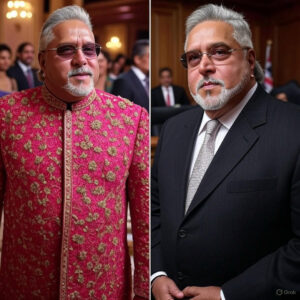Elon Musk, the enigmatic CEO of Tesla, has always been a figure of fascination and controversy. Recently, his $56 billion pay package made headlines again when a U.S. court ruled against it. While the court ruling is significant, the real story lies in how Musk managed to secure such a staggering compensation package in the first place. Here are three key lessons we can learn from this incident.
Table of Contents
ToggleSet Ambitious Targets and Achieve Them

One of the most striking aspects of Musk’s pay package is that it wasn’t just handed to him on a silver platter. Instead, it was tied to a series of ambitious performance targets. The package was structured in 12 tranches, each linked to specific milestones related to Tesla’s market capitalization and operational goals. Musk would only receive the compensation if these targets were met.
This approach teaches us a valuable lesson: Don’t just ask for a salary. Set a target, crush it, and then pay yourself. By setting ambitious goals and achieving them, you not only demonstrate your value but also ensure that your compensation is directly tied to your performance. As Musk himself once said, “When something is important enough, you do it even if the odds are not in your favor.”
Consider the example of Satya Nadella, CEO of Microsoft. Nadella’s compensation is heavily tied to Microsoft’s performance, with significant portions of his pay coming from stock awards that vest based on the company’s success. This alignment ensures that Nadella’s interests are closely tied to those of Microsoft’s shareholders.
Align Incentives with Performance

Another crucial takeaway from Musk’s pay package is the alignment of incentives with performance. The structure of the package ensured that Musk’s interests were perfectly aligned with those of Tesla’s shareholders. If Tesla succeeded, Musk would be handsomely rewarded. If it didn’t, he would receive nothing.
This alignment of incentives is a powerful motivator. It ensures that everyone is working towards the same goals and that rewards are based on actual performance. As Warren Buffett famously said, “You get what you incentivize.” By aligning incentives with performance, companies can drive better results and foster a culture of accountability and excellence.
Jeff Bezos, the founder of Amazon, also exemplifies this principle. For many years, Bezos took a modest salary, with the bulk of his wealth tied to Amazon’s stock performance. This approach ensured that Bezos was deeply invested in the company’s long-term success, aligning his interests with those of Amazon’s shareholders.
The Power of Shareholder Approval

The third lesson from Musk’s pay package is the importance of gaining shareholder approval for major decisions. In 2018, Tesla’s shareholders approved the compensation package with a significant majority voting in favor. This approval was crucial in legitimizing the package and ensuring that it had the backing of those who had a vested interest in the company’s success.
Gaining shareholder approval is not just about ticking a box; it’s about building trust and transparency. When shareholders are involved in major decisions, it fosters a sense of ownership and accountability. As Musk’s case shows, even the most ambitious compensation packages can gain approval if they are transparent and aligned with the company’s goals.
Tim Cook, CEO of Apple, also understands the importance of shareholder approval. Cook’s compensation package includes a mix of salary, bonuses, and stock awards, with a significant portion tied to Apple’s performance and subject to shareholder approval. This ensures that Cook’s compensation is aligned with the company’s success and has the backing of its investors.
Statistics on Performance-Based Compensation
Performance-based compensation is a widely recognized approach in the corporate world. According to a survey by Salary.com, 75% of organizations indicate that performance-based pay is part of their compensation philosophy. Additionally, a study by the Society for Human Resource Management (SHRM) found that 82% of organizations reported an improvement in employee performance after implementing performance-based pay programs.
In 2023, the median pay package for CEOs of S&P 500 companies was $16.3 million, marking a 12.6% increase from the previous year. This figure highlights the growing trend of substantial executive compensation, often tied to company performance. Furthermore, the gap between CEO pay and median worker pay continues to widen, with CEOs earning 196 times more than their median employees.
Engaging Anecdotes
To illustrate the power of performance-based compensation, let’s look at an anecdote from the tech industry. When Marissa Mayer took over as CEO of Yahoo in 2012, she implemented a performance-based compensation plan to turn the struggling company around. Mayer’s plan included significant bonuses tied to specific performance metrics. While her tenure had mixed results, the approach highlighted the potential of performance-based incentives to drive significant efforts towards achieving corporate goals.
Another recent example is the compensation package of Andy Jassy, CEO of Amazon. Jassy’s pay package includes a substantial amount of stock options that vest over time, aligning his interests with the long-term performance of Amazon. This structure ensures that Jassy remains focused on the company’s growth and success, benefiting both shareholders and employees.
Conclusion
Elon Musk’s $56 billion pay package is a fascinating case study in performance-based compensation, alignment of incentives, and shareholder approval. By setting ambitious targets, aligning incentives with performance, and gaining shareholder approval, Musk was able to secure a compensation package that was both extraordinary and justified.
As we reflect on this story, it’s important to remember that success is not just about asking for more; it’s about proving your worth and aligning your goals with those of your stakeholders. As Musk’s journey shows, when you set ambitious targets and achieve them, the rewards can be truly extraordinary.
In the words of Steve Jobs, “The only way to do great work is to love what you do.” By setting ambitious goals, aligning incentives with performance, and gaining the trust and approval of stakeholders, you can achieve remarkable success and be justly rewarded for your efforts.

Jugaad on Two Wheels: The Hilarious Bike Parcel Hack in Karnataka
The Great Karnataka Bike Parcel Hack: A Jugaad Masterclass #RapidoParcel: In a creative yet controversial move, ride-hailing platform Rapido has found a way around Karnataka’s

Denmark’s Digital Sovereignty Revolution: Linux and LibreOffice Lead the Way
Introduction to Denmark’s Bold Move In June 2025, Denmark’s Ministry of Digital Affairs made headlines by embracing digital sovereignty, ditching Microsoft Windows and Office 365

🏏Sports as a Business Strategy: Insights from Vijay Mallya’s RCB Ownership
🧠 Sports as a Business Strategy (Tool) In modern business, few platforms offer better engagement and emotional connection than sports. From football clubs in Europe

🙏 Apologies in Leadership: Vijay Mallya Public Apology
🧠 Introduction: The Role of Apologies in Leadership In the corporate world, apologies aren’t signs of weakness—they’re strategic acts of leadership. When made with sincerity

Audiobook Production Costs: Navigating Recording Artists, Studio Expenses, and AI’s Impact
The audiobook industry is booming, with over 130 million listeners in the U.S. alone in 2021 and a growing global appetite for audio content. Producing

Media Trial of Vijay Mallya: How Public Perception Shaped Vijay Mallya’s Legacy
Introduction: Media’s Influence on Business Narratives In today’s hyper-connected world, media narratives can make or break a business reputation. For Vijay Mallya, once known as

